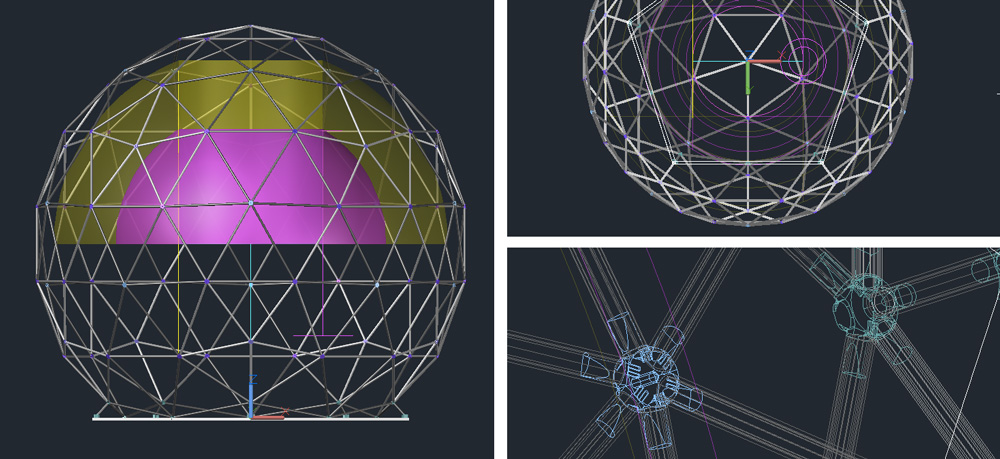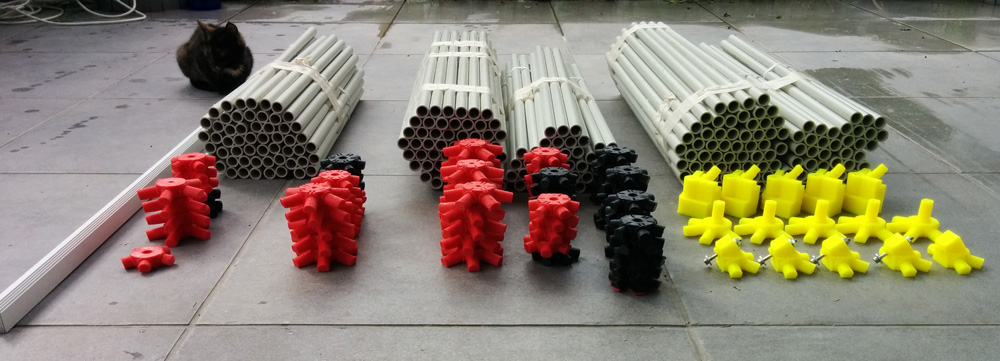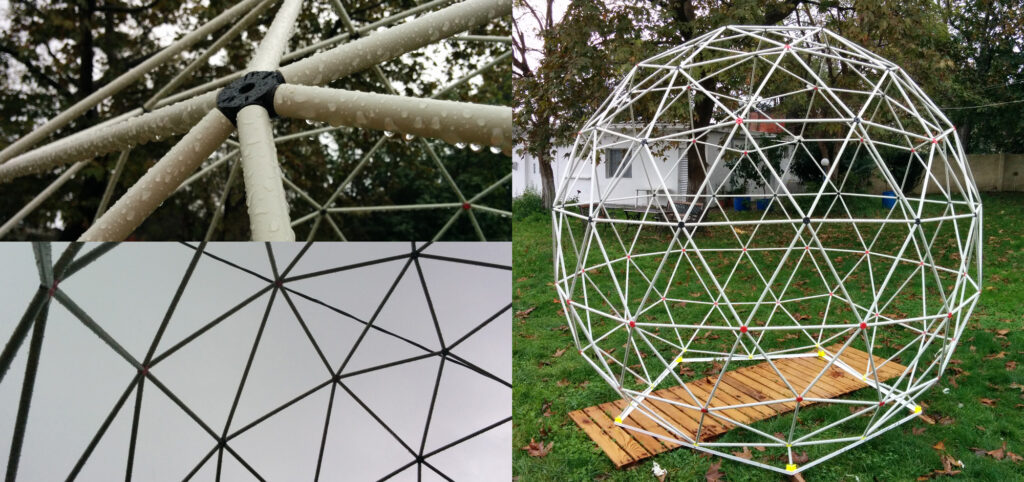In order to achieve global coverage, a network of Ground Stations would have to have nodes in places that are not entirely friendly environments. Desert hot, ice cold, gusty, monsoon rainy, mountain dry and forest humid could be some descriptions of possible locations SatNOGS would have to survive in.
Apart from the obvious networking considerations (internet connection and power) which are not in the scope of our project (and are dealt with existing solutions), SatNOGS has some physical constrains, especially around wind and water.
The relatively compact design, our current antennas and the targeted IP55 protection marking are indeed a slight advantage on moderate wind and rainy situations, but we had to do more to ensure reliable operations on rainy and windy hilltops and locations.
The way to protect antenna tracking mechanisms (especially dish antennas but not only) has been long known in the industry and in military. The name of it Radome (Radar-Dome). Radomes provide weather protection (ice, heat, rain, wind) especially combined with an environmental control system, and ensure uninterrupted operation for moving tracking mechanisms.
After extensive search on the webz we could not find any DIY and/or Open project for a Radome, so we decided to design, build and document one for SatNOGS.
We started with the desired shape and size. A geodesic dome (3V frequency) provides a good approximation of a sphere (less air drag) while not requiring large amounts of material. For the size, we modeled SatNOGS with a typical antenna setup (Helical and Yagi) and calculated the extremes. We ended up with a sphere of 1.5m radius, 1.2m from the ground.
The material selected for construction is PVC tubes for struts (cheap and light-weigth) and ABS connectors (3D printable and durable). The Base is an aluminum (L channel) pentagon that can be bolted on the ground. It is important to emphasize that all materials (except the base pentagon) are non-conductive and dielectric. If Aluminum (or any other metal) was to be used, Quasi-Random patterns would have to mandate the design to avoid interference with the RF signals. For the outer surface many materials were considered, and Shrink Wrap seems to be the most cost-effective, easily applied and durable solution (check here for examples).
Gathering all materials is not hard, especially when you have access to a 3D printer. The overall cost is just below 130 USD.
Construction is pretty straightforward. You start with the pentagon and work your way to the middle. Then you start from the top working your way down, until you are left with two hemispheres. Once those are connected in place you lay out the shrink wrap and using a heat gun you apply it in place.
Depending on the materials you would choose, some bonding might be needed between connectors and struts. (epoxy glue would do just fine). Shrink Wrap would take care of the final rigidity of the structure.
Unfortunately shipping times for shrink wrap as not as fast as we expected so we only finished the skeleton of the radome and we are waiting for the final layer to apply it by next week. (an new log will be posted for this!)
The end result is really impressive taking into account resources used. The structure is really light-weight so 2 people can fit it on SatNOGS by lifting it and lowering it on top of it. Then you would secure the pentagon on the ground and you are ready to go!
Designs (CAD and STLs) are available in our repo, and once the shrink wrap arrives we will be posting a detailed how-to guide.





